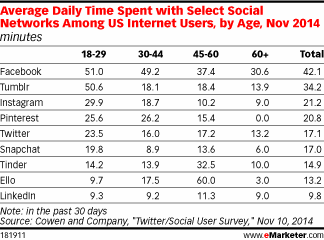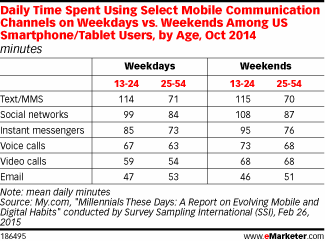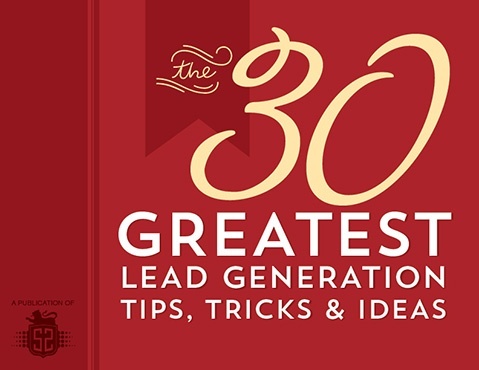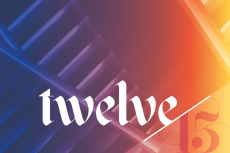
“The children now love luxury. They have bad manners, contempt for authority; they show disrespect for elders and love chatter in place of exercise.” -Socrates
There has always been a disconnect between generations. The young never appreciate the old, and the old never understand the young.
But with an ever growing population of Millennials, more and more people are starting to pay attention to generation Y. There is a hand-wringing that Millennials are completely different.
The question is: Are the behaviors of generation Y truly different, and do they require a different approach to marketing?
Who are Millennials (Generation Y)?
This generation was born between 1980 and 2000, and has come of age being subject to more advertising than any generation in history. But the key factor that sets Millennials apart from any other generation is that they lived through the technology boom during their developmental years.
That means that a lot of who they are and how theyact was formed by technology, and yes, generally they can text faster than the Baby Boomers and figure out Snapchat better than Generation X.
According to Time Magazine, there are about 80 million Millennials and 76 million Boomers in America. Half of all Millennials are already in the workforce, and millions are added every year. Approximately 10,000 Millennials turn 21 every day in America, and by the year 2025, three out of every four workers globally will be Gen Y.
For the next several decades, Millennials are the generation marketers are going to target for their brands and products.
The great Millennial misconception:
You have to market to Millennials different from any other generation, and the only way to learn how to reach them is to engage a Millennial.
THIS IS SIMPLY BOGUS!
The truth is that reaching people is changing across many generations, but the fundamentals of persuasion are not changing.
How we got to believing Millennials are different?
For example everyone claims that the only way to reach Millennials is through electronic communication. Millennials grew up after a digital revolution. I just shared with my 18 year-old the story of being stuck in an airport for hours because my flight was canceled and my parents were in route home after dropping me off. She was stunned by the scenario because she has never lived in a time that she could not connect with others instantly.
Advertisers are spending 500 percent more on digital media to reach Millennials than on other media to reach all other consumer groups, says new research from the ad data and analysis firm Turn. And marketers such as Bazaar Voice are teaching:
“Constantly connected and dependent on social media, they shop in a whole new way – and brands must sell to them accordingly, or miss this tidal wave of opportunity.”
But is this true of just Millenials. Let’s look at data:


Let’s dissect all of this information.
Look at the charts above one more time, and you’ll notice Millennials are spending more time on their digital device and social media than other generations but it is by a small margin. What is even more interesting to marketers is that every generation spends over an hour on their smartphone every day!
The truth is, technology has altered how everyone communicates, not just Millennials.
So should we change our marketing strategy and adapt to the new medium that every generation seems to spend more time on? Yes, but don’t be mislead that Millennials can only be reached through this new medium.
This idea that Millennials can’t be reached or understood, because they spend all their time with technology isn’t true. Technology doesn’t change the fact that we are all still human and the fundamentals of marketing and motivating people to take action haven’t changed.
A study in 2013 indicated thatover half of youth between 15-24 have purchased a product based on a direct mail promotion. And a whopping 92% of young shoppers say they prefer/trust printed materials over digital when making purchasing decisions.
Just because a new medium has been added, doesn’t mean that the fundamentals of communication conveyed through that medium has been altered. It also doesn’t mean that you forget all past forms of communication and marketing.
At the end of the day Millennials are just humans:
People of every generation for example tend to remember and focus on uncompleted tasks more than completed ones. This is called the Zeigarnik Effect. Marketers use the Zeigarnik Effect to boost engagement because something that looks incomplete to our brain will demand our attention until we’re able resolve or complete the task. It can be as simple as using ellipses. An email subject or direct mail envelope with: It ’s why we can’t resist…” just begs to be opened. Millennials and Baby Boomers respond the same.
Images trigger responses in our minds; they always have. From our early ancestors painting their hunting expeditions on caves, to Gutenberg creating the first printed book. Millennials don’t respond better to images but are just more accustomed to seeing them in large quantities.
The takeaway:
There is no doubt things are changing, and the way businesses market and promote their products and services has evolved as well. But throughout these changes, the basic underpinnings of marketing, psychology, and human behavior has remained constant.
Humans will always value the happiness that comes with the human experience, and as different as Millennials might seem, they share those same emotions, feelings, and desires humans have been feeling for centuries.
Keep the fundamentals of marketing, adapt them to the new technology, and don’t throw everything away because a new generation appears on the scene unless you want to start sounding like a cranky Socrates.





















